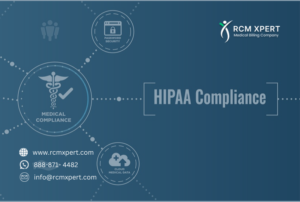In the complex world of healthcare administration, medical billing plays a crucial role in ensuring that healthcare providers receive proper compensation for their services, and one essential component of this process is the entity code. An entity code in medical billing classifies various participants in the healthcare process, such as providers, patients, and insurance companies, to ensure accurate claim processing. By clearly identifying each party involved, entity codes help streamline the billing process and maintain the integrity of the healthcare revenue cycle. In this comprehensive guide, we’ll explore the purpose, types, and significance of entity codes to shed light on their vital role in medical billing.
Understanding Entity Codes: The Basics
Entity codes are unique identifiers used in medical billing to specify the type of organization or individual providing healthcare services. These codes help payers, such as insurance companies or government programs, understand who is billing for the services rendered. This information is crucial for accurate claims processing and reimbursement.
Key points about entity codes:
- They identify the type of healthcare provider or organization
- They are used on claim forms and electronic submissions
- They ensure proper routing and processing of claims
- They help prevent fraud and abuse in the healthcare system
Why Are Entity Codes Important in Medical Billing?
Entity codes play a vital role in the medical billing process for several reasons:
1. Accurate Provider Identification
By using specific entity codes, healthcare organizations can identify the type of provider or facility that rendered the services. This clarity helps prevent confusion and ensures that claims are processed correctly.
2. Proper Reimbursement
Different types of providers and facilities may have different reimbursement rates for the same service. Entity codes help payers determine the appropriate payment amount based on the provider type.
3. Regulatory Compliance
Many healthcare regulations require specific reporting based on the type of entity providing care. Using the correct entity code ensures compliance with these regulations and helps avoid potential legal issues.
4. Streamlined Claims Processing
When claims are submitted with the correct entity code, it reduces the likelihood of errors and delays in processing. This efficiency can lead to faster reimbursement for healthcare providers.
Types of Entity Codes in Medical Billing
There are numerous entity codes used in medical billing, each representing a different type of healthcare provider or organization. Let’s explore some of the most common types:
1. Individual Physician Codes
These codes are used for solo practitioners or individual doctors providing services. Examples include:
- 1A: Solo practice
- 1B: Physician employed by a group practice
- 1C: Physician employed by a hospital
2. Group Practice Codes
When multiple physicians work together in a group setting, specific entity codes are used:
- 2A: Single-specialty group
- 2B: Multi-specialty group
3. Hospital Codes
Hospitals have their own set of entity codes to differentiate between various types of facilities:
- 3A: General acute care hospital
- 3B: Psychiatric hospital
- 3C: Rehabilitation hospital
4. Other Healthcare Facility Codes
There are codes for various other types of healthcare facilities, such as:
- 4A: Skilled nursing facility
- 4B: Home health agency
- 4C: Ambulatory surgery center
5. Supplier Codes
These codes are used for entities that provide medical equipment or supplies:
- 5A: Durable medical equipment supplier
- 5B: Pharmacy
How to Use Entity Codes in Medical Billing
Proper use of entity codes is essential for accurate and efficient medical billing. Here are some tips for using entity codes correctly:
1. Determine the Correct Code
Before submitting a claim, ensure you’ve selected the appropriate entity code that best describes your organization or provider type. If you’re unsure, consult with your billing department or a medical billing expert.
2. Include on All Claims
Make sure to include the correct entity code on all claim forms, whether they are paper or electronic. This information is typically entered in a specific field designated for the entity code.
3. Keep Up with Changes
Entity codes may change over time as new provider types emerge or regulations evolve. Stay informed about any updates to entity codes relevant to your practice or organization.
4. Train Staff
Ensure that all staff involved in the billing process understand the importance of entity codes and how to use them correctly. Regular training can help prevent errors and improve overall billing accuracy.
Common Challenges with Entity Codes in Medical Billing
While entity codes are essential for accurate billing, they can sometimes present challenges for healthcare providers and billing staff. Here are some common issues and how to address them:
1. Incorrect Code Selection
Choosing the wrong entity code can lead to claim denials or incorrect reimbursement. To avoid this:
- Double-check the code before submitting claims
- Create a quick reference guide for staff to use when selecting codes
- Implement software that validates entity codes before submission
2. Changes in Provider Status
When a provider’s status changes (e.g., from solo practice to group practice), the entity code must be updated. To manage this:
- Establish a process for regularly reviewing and updating provider information
- Communicate changes promptly to all relevant staff members
- Update billing software and systems to reflect the new entity code
3. Multiple Entity Types Within One Organization
Large healthcare organizations may have multiple entity types under one umbrella. In these cases:
- Develop a clear system for differentiating between entity types
- Train staff on how to select the appropriate code based on the specific service provided
- Consider implementing separate billing processes for different entity types if necessary
The Future of Entity Codes in Medical Billing
As the healthcare industry continues to evolve, so too will the use of entity codes in medical billing. Here are some potential developments to watch for:
1. Increased Specificity
We may see the introduction of more specific entity codes to account for new types of healthcare providers and delivery models, such as telemedicine specialists or retail clinics.
2. Integration with Electronic Health Records (EHRs)
As EHR systems become more sophisticated, we might see better integration of entity codes, potentially automating code selection based on provider and service information.
3. AI and Machine Learning Applications
Artificial intelligence and machine learning could be used to analyze billing patterns and suggest the most appropriate entity codes, reducing errors and improving efficiency.
4. Blockchain Technology
Blockchain could potentially be used to create a more secure and transparent system for managing entity codes and provider information across the healthcare ecosystem.
Conclusion: Mastering Entity Codes for Efficient Medical Billing
Entity codes are a crucial component of the medical billing process, playing a vital role in ensuring accurate provider identification, proper reimbursement, and regulatory compliance. By understanding the different types of entity codes, how to use them correctly, and staying informed about potential challenges and future developments, healthcare providers and billing professionals can optimize their revenue cycle management.
Remember, accurate use of entity codes is not just about getting paid – it’s about maintaining the integrity of the healthcare system and ensuring that patients receive the care they need from properly identified and reimbursed providers. As the healthcare landscape continues to evolve, mastering the use of entity codes will remain an essential skill for anyone involved in medical billing and healthcare administration.














